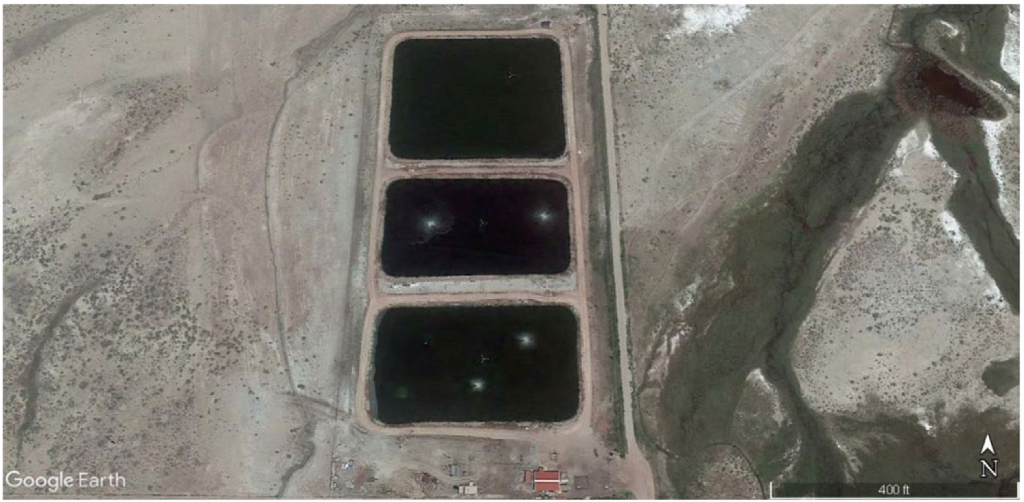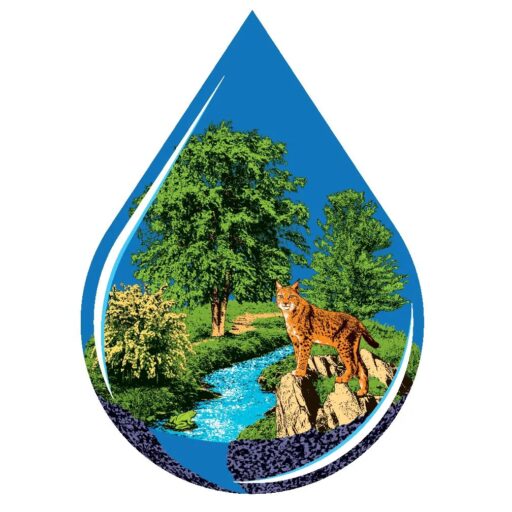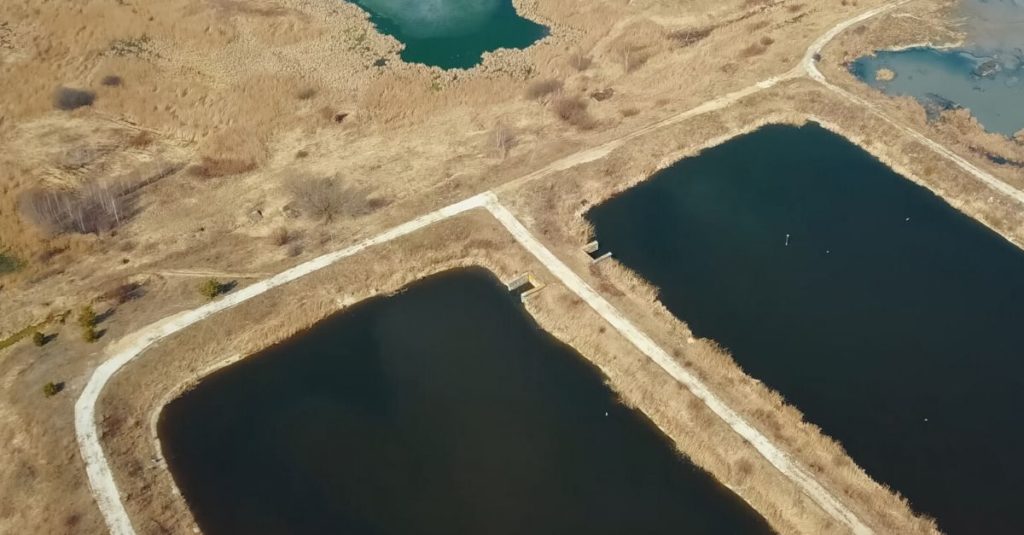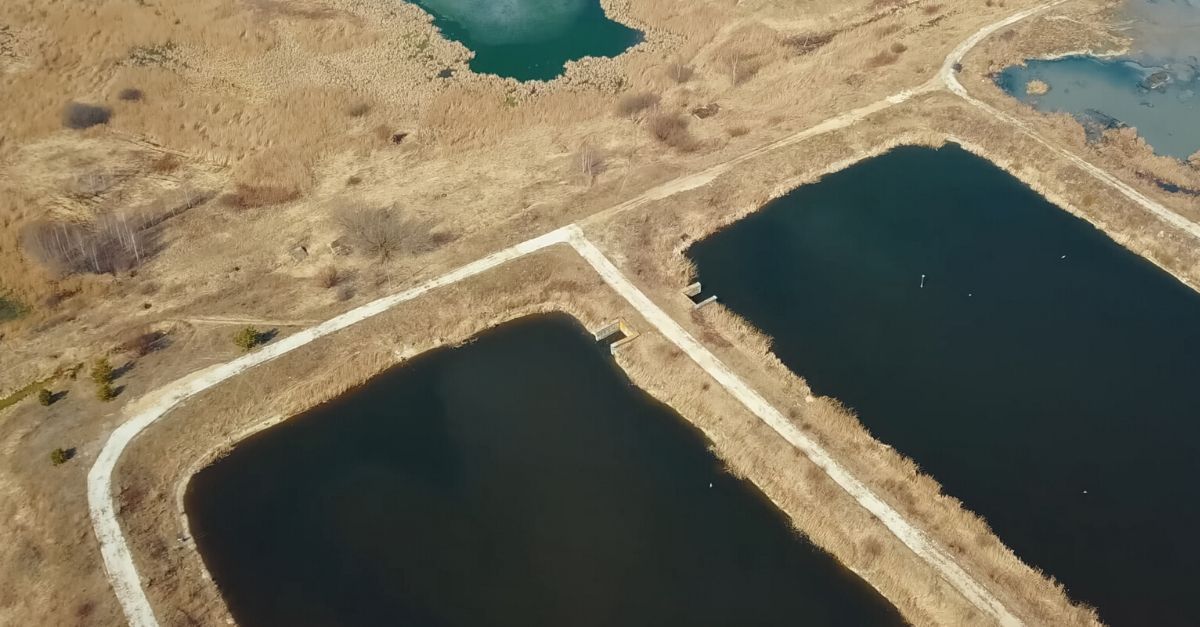Lagoon WWTP 0.3 MGD
Wastewater lagoon systems often experience biological upsets when toxic loads are introduced. Specifically, the chemicals used in illicit drug manufacturing can cause significant harm to the microbial communities in surface waters.
Municipal lagoon systems are especially vulnerable to these chemicals, because they receive high strength influent directly from urban sources. The remainder of this document discusses the use of ProBiotic Scrubber® II (PBII) to augment a lagoon system struggling with biomass die off from various causes.

Figure 1. Google Earth image of the 0.3 MGD wastewater lagoon system.
The operators of the wastewater lagoons servicing a Wyoming town of 2,000 people realized their three- cell system (Figure 1) was becoming very unhealthy. This was evident because the wastewater in the ponds had a strong odor and changed color.
The facility management and a Wyoming Rural Water Wastewater Technician (WRWWT) concluded the biology in the system was killed off by toxic chemicals that were introduced through the collection system from ilicit drug manufacturing in the area. Concerned about the
long recovery time for the lagoon biology to regenerate naturally, the management sought a solution to expedite the process. They hired BioLynceus® to restore the biomass needed to properly process wastewater again.
After assessing the system, the WRWWT recommended augmenting the lagoons with BioLynceus® PBII. The plant operators manually applied the product at the influent of cell one. Within three days, the treatment helped replenish the biomass in the first cell and started properly processing wastewater.
The following two cells were operating efficiently within a week. The management at the facility was pleased with the treatment, because the health of the system improved in half the time of previously used methods.
Additional benefits of the PBII treatment included decreased odors from the ponds and improved wastewater coloring. The odor reduction relieved the treatment facility employees and town residents of unpleasant smells. Secondly, the wastewater color was restored back to a normal appearance.
These results indicated that, after treatment, the system had a stable and functional biomass. Using PBII also helped the lagoon system quickly recover from toxicity. The plant now uses PBII twice a year and as needed whenever they experience a chemical load that kills off the biology.
BioLynceus® ProBiotic Scrubber® II provides wastewater biomass stability after toxicity.
1 Lee S., Paspalof A., Snow D., Richmond K., Rosi-Marshall J., & Kelly J. (2016). Occurrence and Potential Biological Effects of Amphetamine on Stream Communities. Environmental Science Technology. 50 (17): 9727-9735.https://pubs.acs.org/doi/abs/10.1021/acs.est.6b03717



